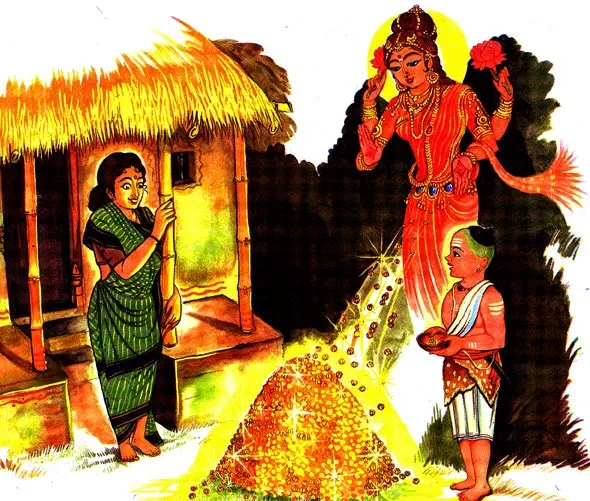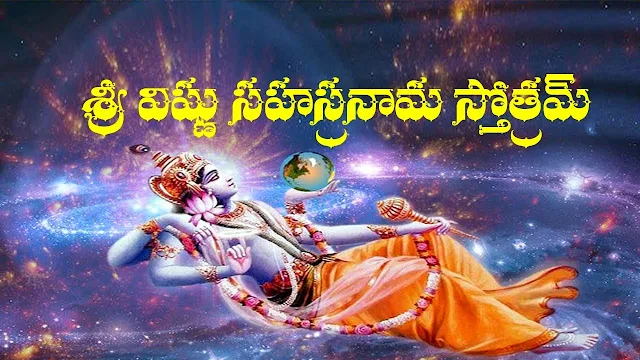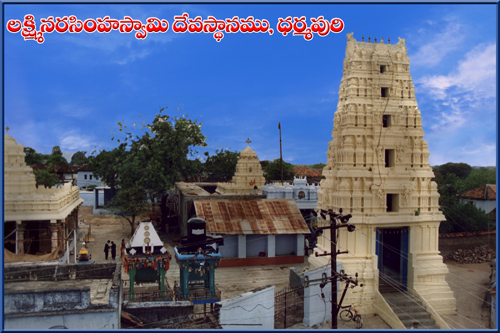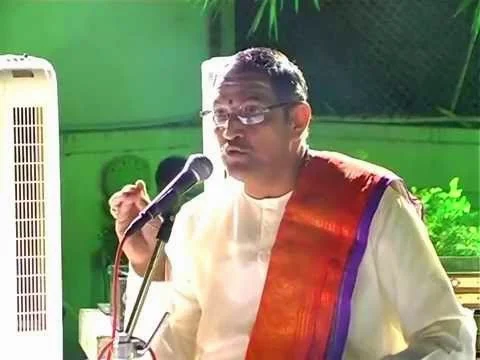
Kanakadhara Sthotram by M S Subbalaxmi garu
Kanakadhara Stotram is a hymn. It is called Kanakadhara because when Adi Sankara recited it, the Goddess Lakshmi created a show of golden fruit.
The hymn was written in the 8th century by Adi Sankara, a revered Hindu philosopher and theologian. Sankara took Sanyasa (renunciation) at the age of eight. One day, as a young boy, he was begging for alms to prepare his lunch and he went to the house of a very poor Brahmin lady to beg. The lady was upset because there was nothing edible in the house. After searching the house once again she found one amla(Amalak, gooseberry) fruit. She hesitantly offered it to Sankara. He was moved after seeing the plight of the woman and sang 21 hymns praising Goddess Lakshmi. The Goddess was so pleased that she appeared before him and asked him why he has remembered her. He asked the Goddess to grant riches to the poor woman. The Goddess first refused to do so because the lady had not done any work for charity in her previous birth and it is not possible to change one's fate. Sankara told the Goddess that she is the only one who is capable of changing the fate of someone by erasing or changing the writings of the future made by Lord Brahma on the forehead of the person. The Goddess was so pleased that she instantly showered the Brahman lady's house with goose berries made of pure gold. The 21 stanzas became famous and are read by all devout Hindus.
The hymn was written in the 8th century by Adi Sankara, a revered Hindu philosopher and theologian. Sankara took Sanyasa (renunciation) at the age of eight. One day, as a young boy, he was begging for alms to prepare his lunch and he went to the house of a very poor Brahmin lady to beg. The lady was upset because there was nothing edible in the house. After searching the house once again she found one amla(Amalak, gooseberry) fruit. She hesitantly offered it to Sankara. He was moved after seeing the plight of the woman and sang 21 hymns praising Goddess Lakshmi. The Goddess was so pleased that she appeared before him and asked him why he has remembered her. He asked the Goddess to grant riches to the poor woman. The Goddess first refused to do so because the lady had not done any work for charity in her previous birth and it is not possible to change one's fate. Sankara told the Goddess that she is the only one who is capable of changing the fate of someone by erasing or changing the writings of the future made by Lord Brahma on the forehead of the person. The Goddess was so pleased that she instantly showered the Brahman lady's house with goose berries made of pure gold. The 21 stanzas became famous and are read by all devout Hindus.

Hanuman Chalisa by Lata Mangeshkar garu

Hanuman Chalisa (40 verses) is a hindu devotional hymn addressed to Lord Hanuman. The qualities of Hanuman -- his strength, courage, wisdom, celibacy, devotion to Rama and the many names by which he was known -- are detailed in the Hanuman Chalisa.
Sri Venkatesa Suprabhatam by -M.S.Subbulakshmi with rare video
The Veṅkaṭeśasuprabhātam was composed around 1430 A.D. by Prativādibhayaṅkara Śrī Anantācārya (also known as Annangaracharyar, and P B Annan), the Rāmānujācārya of Kanchipuram. The poet was a disciple of Swami Manavala Mamuni, who composed Sri Ranganatha Suprabhatam. Sri Venkatesa Suprabhatam consists of four parts: Suprabhatam, Sri Venkatesa Stothram, Prapatti, and Mangalasasanam. Lakshmi Narayana deity, Sri-Bhu Devi sametha Padmanabha Swamy deity and 12 divya salagrama silas once worshiped by him are now with Prativada Bhayankaram Raghavacharyulu 15th generation from Sri Annan Swamy. These are now being worshiped daily at Divya Salagrama Kshetram in Vijayawada, Andhra Pradesh.
Vishnu Sahasranaama by MS Subbalakshmi garu with subtitles

Vishnu Sahasranāmam, Viṣṇusahasranāma is a Sanskrit hymn which contains a list of 1,000 names of Vishnu, one of the main deities in Hinduism and the supreme God in Vaishnavism. It is one of the most sacred and popular stotras in Hinduism. The Vishnu Sahasranāma as found in the Anushasana Parva of the epic Mahabharata. It is the most popular version of the 1,000 names of Vishnu. Other versions exist in the Padma Purana, Skanda Purana and Garuda Purana. There is also a Sikh version, found in the text Sundar Gutka.
Sri Lalitha Sahasranama Stotra & Meaning

This Lalitha Sahasranam is from Brahmanda Purana. Brahmanda purana is one of the 18 puranas in Hindhu Mithalogy. Lalitha Devi is a bliss. Sahasranama is Thousand names. Lalitha sahasranama means 1000 names of godess lalitha devi. The names are in the form of stotra. Nornally in any devine sahasranama, no name will be repeated. Same as in this also, not a single name is repeated.
The Lalita sahasranama does not use any such auxiliary conjunctions and is unique in being an enumeration of holy names that meets the metrical, poetical and mystic requirements of a sahasranama by their order throughout the text.
Lalita Sahasranama starts by calling the goddess Shri Mata means the great mother, Shri Maharajni means the great queen and Shrimat Simhasaneshwari meansthe queen sitting on the lion-throne. In verses 2 and 3 of the Sahasranama she is described as a Udayatbhanu Sahasrabha means the one who is as bright as the rays of thousand rising suns, Chaturbahu Samanvita means godess with four hands and Ragasvarupa Pashadhya (the one who is holding the rope). Chidagnikunda Sambhuta (one who was born from the altar of the fire of consciousness) and Devakarya samudyata (one who manifested Herself for fulfilling the objects of the devas) are among other names mentioned in the sahasranama.
The Lalita sahasranama does not use any such auxiliary conjunctions and is unique in being an enumeration of holy names that meets the metrical, poetical and mystic requirements of a sahasranama by their order throughout the text.
Lalita Sahasranama starts by calling the goddess Shri Mata means the great mother, Shri Maharajni means the great queen and Shrimat Simhasaneshwari meansthe queen sitting on the lion-throne. In verses 2 and 3 of the Sahasranama she is described as a Udayatbhanu Sahasrabha means the one who is as bright as the rays of thousand rising suns, Chaturbahu Samanvita means godess with four hands and Ragasvarupa Pashadhya (the one who is holding the rope). Chidagnikunda Sambhuta (one who was born from the altar of the fire of consciousness) and Devakarya samudyata (one who manifested Herself for fulfilling the objects of the devas) are among other names mentioned in the sahasranama.
Sri Lalitha Sahasranama Bhashyam by Brahmasri Samavedam Shanmukha Sarma
Sri Lalitha Sahasranama Sthotram full in Lalitha Devi Image
Dharmapuri Vaibhavam By Vaddiparti Padmakar Garu

Dharmapuri is a town and mandal headquarters in Karimnagar district of Telangana, India. Dharmapuri Assembly constituency was a SC reserved constituency of Andhra Pradesh Legislative Assembly, India in the unified Andhra Pradesh. It is one among 13 constituencies in Karimnagar district.
The temple is situated in the karimnagar district, on the southern bank of the sacred river Godavari, Dharmapuri also called as Dakshina kashi famous. among the nine this is one of the Narasimha Kshetras of the Telangana...This temples relates to king called Dharmavarma ruled it. It is a punyakshetra because of its many great ancient temples. This place is with a great history and culture. Lord Narasimha along with the goddess laxmi is called as Yoga Narasimha, which is a rare darshana. And it is a punyatirtha because of its holy river Godavari. It is believed that Dharmpuri was a place of rich religion, philosophy and spirituality.
The temple is situated in the karimnagar district, on the southern bank of the sacred river Godavari, Dharmapuri also called as Dakshina kashi famous. among the nine this is one of the Narasimha Kshetras of the Telangana...This temples relates to king called Dharmavarma ruled it. It is a punyakshetra because of its many great ancient temples. This place is with a great history and culture. Lord Narasimha along with the goddess laxmi is called as Yoga Narasimha, which is a rare darshana. And it is a punyatirtha because of its holy river Godavari. It is believed that Dharmpuri was a place of rich religion, philosophy and spirituality.
Subscribe to:
Comments (Atom)



